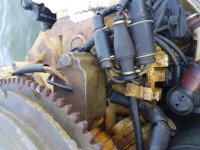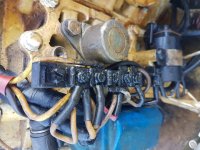Snapper Fisho
Regular Contributor


Hi all, I have had this 1982 Johnson V4 115hp since new and over the years I have had the dealership and a marine mechanic change two rectifiers. on the starboard side near the terminal strip. Now that I have learned to do things myself, as I have had it for so long, I happened to notice that on the port side, partly under the flywheel, is a voltage regulator also. It definitely was fitted new as it has been there back in the early days but I had no idea what it was.
Has anyone seen this before? I find it odd that both were fitted and you would think that the dealership might have said something about it when i had a charging issue problem the first time. They only changed the 3 wire rectifier. The second rectifier change was done by a marine mechanic when my tacho suddenly died and again nothing was said (I know now that i can troubleshoot this myself but have no charging issues since as I have a voltmeter fitted to the dash).
The voltage rectifier purple and yellow wires are still connected to the terminal strip together with the rectifier wires. There is also a short black earth wire that is grounded to the block where the regulator sits.
Here are a couple of pics. Would be really interested to get the thoughts of the more experienced forum members here. Many thanks!
Last edited:

